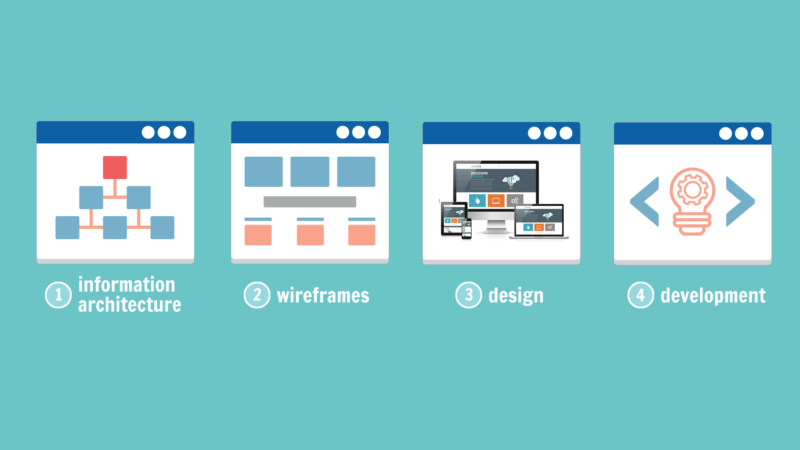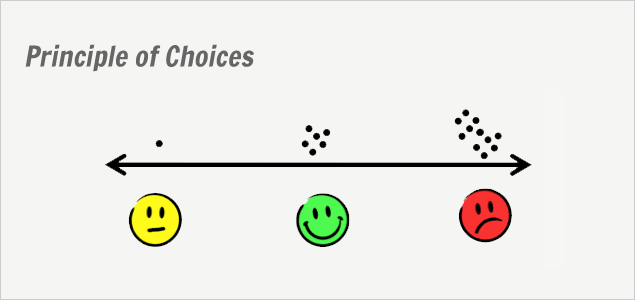Redesigning Or Creating A Website? Here’s Why Information Architecture Should Be Priority #1
Columnist Shari Thurow explains information architecture, site navigation, and how they relate to one another.

The goal of effective information architecture (IA) is to make the products, services and information on your website easy to find. The main goal of site navigation is to enable task completion. Both information architecture and site navigation are critical for a positive user experience. They also affect your website’s bottom line.
Customers can’t buy what they can’t find. When customers can’t find desirable content on your site, they often look elsewhere. Unwieldy or confusing site navigation also leads to abandonment.
Whether you are creating a new website or redesigning an existing one, architecture and navigation should be at the center of the planning process. What follows are important things to know when putting together a web team.
What Is Information Architecture?
On a website, information architecture is organizing, labeling, prioritizing, and connecting content to support usability and findability. In other words, a website with a clear information architecture:
- Makes a website easier to use
- Makes website content is easier to find
In my short definition, there are 4 words that are very important: organizing, labeling, prioritizing, and connecting.
1. Organization
People group information and content by some shared characteristics. Below are some common ways that people group information:
- Date/time
- Alphabetical
- Format
- Geography/location
- Social
- Topic/subject
- Target audience
- Task/process
- Attributes/facets
- Combinations of the above
Quick Tip: One of the biggest mistakes that people make when architecting websites is to base them on keyword research data, web analytics data, and alleged PageRank (i.e. a number between 1-10).
Although the data from these resources can be very useful, information architects understand that users genuinely do not organize information by these means.
2. Labeling
A label is an item used to identify something. Another word I like to use is nomenclature, which is the devising or choosing of names for things. A text-based label should be unique, as confusing labels can lead to “pogo-sticking” (which is a negative finding behavior).
On a website, there are 3 types of labels that are important for usability, user experience (UX), and findability:
- Document labels
- Content labels
- Navigation labels
Both users and technology should easily understand labels. Labels should be as descriptive as possible, though navigation labels tend to be shorter than content labels. And their usage should be consistent. For example, a URL (a document heading), a content heading, and site navigation label should communicate nearly the same information.
Please see How To Use Effective Navigation Labels for Search Engine Optimization.
3. Prioritizing
Deciding the order in which to place items is a very important part of the IA process. Information architects try to maintain an effective balance between business goals and user needs/expectations.
Information architects must also decide the number of items to include in a category or facet. Let’s use site navigation menus as an example. How many items per menu are too many for users? How many items are too few? What is the order in which users wish to see site navigation items? What is the order in which the business owner wishes to present navigation items?

Adapted from Brown, D. (2011). Principles of Information Architecture. UIE Virtual Seminars presentation.
Information architects understand that too many choices can overwhelm users. Providing too many choices can have the opposite effect that business owners intend. Users can easily overlook a link in a large menu. In a worst-case scenario, users might abandon a website because site navigation is too unwieldy.
On the flip side, too few navigation choices can make users feel a loss of control, which can also cause website abandonment.
Information architects try to determine the “sweet spot” for the number of navigation choices and how those choices are ultimately presented to users.
4. Connecting
Information architects connect content in ways that are meaningful to users. Information architects can connect content that ultimately results in a site navigation system. And they can connect content in a way that is technology based, such as a site search engine.
Remember, though, that information architecture is NOT navigation. And information architecture is NOT search.
“Every time someone says ‘Information architecture and search,’ God kills a kitten,” says Louis Rosenfeld, renowned information architecture consultant and co-founder of the Information Architecture Institute.”IA is about helping people to find and, ultimately, understand information. Successful finding means enabling people to do a few things—searching, browsing, and asking — often at the same time, in the same session. Not only is the sum greater than those parts, but it’s also how people naturally interact with information.”
“If you think that IA is simply about navigating,” Rosenfeld continues, “and that search is an entirely different animal, I can guarantee that your users will suffer from a crappy finding experience.”
“The structures we make and depend on for all sorts of design work involve information architecture,” said Andrew Hinton, author of Understanding Context: Environment, Language, and Information Architecture. “Architecture is the starting place for figuring out foundations, boundaries, connections. Navigational aids… are only as smart as the structures provided to them in the environment to begin with.”
Some Quick Information Architecture & Site Navigation Facts
- Information architecture is not site navigation
- Information architecture is not technical architecture
- Information architecture should precede site design and development
- Information architecture should be largely based on the mental models of your end users
- Information architecture is critical for a positive user experience (including delight)
- Effective information architecture and site navigation is critical for long-term search engine visibility
“Navigation is deceptively complex yet wildly critical to your online business,” said Jim Kalbach, author of Designing Web Navigation. “To design the best navigation, start from the inside and work outwards.”
In other words, before you construct and design site navigation, begin with information architecture.
Of course, I am not saying to ignore the aesthetics of navigation design. Nor am I saying to ignore the user experience. What I am saying is to have a strong foundation that makes sense and is meaningful to users.
I think my colleague, Noreen Whysel, Community Manager for the OWASP Foundation, Operations Advisor for the Information Architecture Institute, and independent researcher, summarizes this well:
“Information architecture is getting people to the information they need quickly, easily and without a lot of hassle. It’s sort of like a good road map. But it doesn’t mean leaving out the scenic overlooks. I’m a big fan of brown highway signs and serendipity. Sometimes you need a big picture view or a detour to get a new perspective on what you are looking for.”
Amen to that, Noreen.
Recommended IA & Site Navigation Reading
Here is a partial, fundamental bibliography for understanding information architecture and site navigation. These are books and articles that I consider essential reading.
- Hinton, Andrew. (2014). Understanding Context: Environment, Language, and Information Architecture. O’Reilly Media, Inc.
- Kalbach, J. (2007). Designing Web Navigation. O’Reilly Media, Inc.
- Morville, P. (2005). Ambient Findability: What We Find Changes Who We Become. O’Reilly Media, Inc.
- Morville, P., & Callender, J. (2010). Search Patterns: Design for Discovery. O’Reilly Media, Inc.
- Resmini, A., & Rosati, L. (2011). Pervasive Information Architecture: Designing Cross-Channel User Experiences. Elsevier.
- Rosenfeld, L. (2011). Search Analytics for Your Site: Conversations with Your Customers. Rosenfeld Media.
- Rosenfeld, L., & Morville, P. (2003). Information Architecture for the World Wide Web, 3rd Edition. O’Reilly Media, Inc.
- Sauro, J. (2013). Using Card Sorting To Test Information Architecture. Retrieved from http://www.measuringu.com/blog/card-sorting-ia.php.
- Spencer, D. (2009). Card Sorting: Designing Usable Categories. Rosenfeld Media.
- Spencer, D. (2010). A Practical Guide to Information Architecture. Penarth: Five Simple Steps.
Contributing authors are invited to create content for MarTech and are chosen for their expertise and contribution to the search community. Our contributors work under the oversight of the editorial staff and contributions are checked for quality and relevance to our readers. MarTech is owned by Semrush. Contributor was not asked to make any direct or indirect mentions of Semrush. The opinions they express are their own.
Related stories